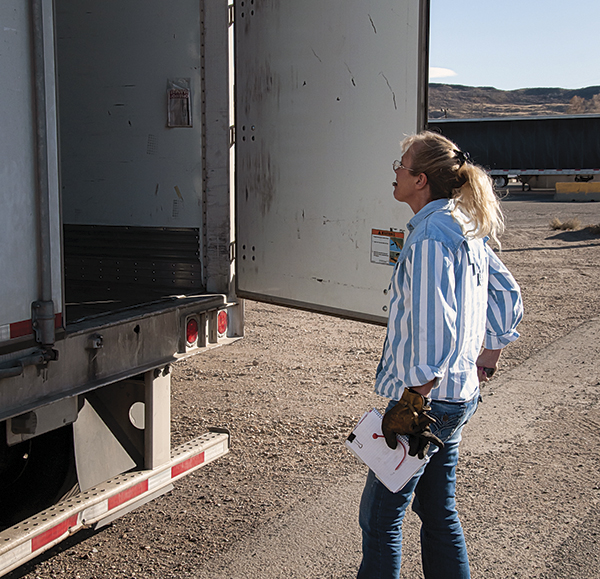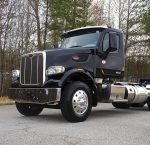My company operated about 75 service trucks at one time. Of course, that also meant we had more than 75 drivers operating said trucks. We were in the commercial tire business—a market where there was never a shortage of competitors. In fact, it almost felt as if we were a commodity business at times. Even so, we garnered some 61% market share in the lifetime of our business. Our competition included international tire companies as well as many established, locally-owned businesses. Larger, well-known companies had less than 20% market share where we operated, yet had been in business many more years than us.
How was this possible? What did our company do differently?
From the time we began our business, we made it a point to invest in our drivers. If you think about it, the customer sees the drivers far more than a salesperson or management. Therefore we intended to have excellent customer interaction. We found that customer satisfaction was almost always dependent on the relationship with and training of our serviceperson. As the founder, I personally met with every serviceperson we hired, not just during the initial training period, but every year thereafter. I knew it was essential to sit down, one on one, with each serviceperson for however long it took to truly hear from them.
Most importantly, I wanted to know if management was living up to the employee’s expectations and giving them the support they needed. Every driver knew that they could talk to me at any time if they needed. Because we followed up with them regularly, those types of meetings were generally to explain how they thought we could improve services. What a gift that is to management!
FLIPPING THE PYRAMID
In order to explain the “hierarchy” of our organization, we must first share the way most other organizations operate. Typically, the first tier of the pyramid has the founder on top. The next tier usually shows the dispatch office and service managers, with service drivers near the bottom. Now, let’s flip that pyramid upside down to explain how our company operated.
The serviceperson is now at the top with the dispatchers and service managers right underneath them for support, making sure they always have what they need to do their job. At the bottom, you’ll find me. My job is to make sure the dispatchers have all the support and tools they need to make sure the service people could do their job well. How’s that for upside-down thinking?
But remember: 61% market share compared to the 20% of most other companies. I’d have to say we were doing something right with this upside-down pyramid.
EMPLOYEE-MINDED
In conducting meetings with our employees and being diligent in seeing how we could better serve them, sometimes we found that the future a driver truly wanted was not something that fit in our industry. So, I would help them get a job in another company outside our industry.
Wait, really?
Yes! Every driver knew we were serious about what we told them; that we did sincerely care about their well-being and how we could help them succeed. One of our best earthmover truck drivers came to us and shared that he wanted to move away from working outside and being on call often. Instead, he wanted to be a mechanic.
Now, let me get one thing straight: I really liked this driver, and I didn’t want to lose him. He was an exceptional employee that would be incredibly hard to replace. But I knew what I needed to do. I talked to one of our largest trucking fleets who had thousands of trucks and trailers and several maintenance facilities on the west coast. They had an opening and hired our driver almost immediately. Within a few years, he was managing their main facility.
One day the owner of the company called me to thank me and let me know that our driver Mike was one of their best employees. Over 20 years later, Mike is still in contact with me, and I feel honored to have been a part of his journey.
RECOGNIZE THE VALUE
Another very large customer of ours, Lynden Transport, operated thousands of pieces of equipment in Washington, Alaska, and Texas. One of our service drivers was onsite at their main facility every day at 7 am. They bought a lot of truck tires and retreading, and we were their main supplier.
One day, a vendor presented us with a substantial discount for a minimum of 100 purchases on a tire Lynden used for trailers. I went to meet the maintenance director and explained the opportunity to save quite a bit of money. He told me that if they needed the tire, I had the green light to put them in stock, but first to check in with Zane, an employee of mine.
Unfortunately, Zane told me they didn’t need the tires after all. They had recently lost a contract, and there were currently 200 trailers out of service. When he needed tires for the trailers he was running, he used the tires from the unused trailers. As soon as those 200 trailers were back in use then of course they would need hundreds of tires, just not at the time of the sale. Now keep in mind, the serviceperson, Zane, would have also received a commission of about $10 a tire on that sale! Would you have been that honest?
So, I went back to the maintenance director. “Man, I used to think I was a good salesperson, but now I can’t even sell tires to my own employee!” I said, shaking my head.
He looked at me and said, “Kim, that is the main reason we do business with you. You’re honest, and your employees follow your lead.”
We trained the service drivers that the number one goal was doing what was best for the customer, not making a sale. They knew that the long-term value of a continued relationship was far more valuable than a quick sale.
INVEST IN YOUR PEOPLE
Other tire service people noticed that we operated differently and wanted to work for our company, and for good reason. We had great equipment that the service people helped us choose, we paid top wages and commission, and we had health coverage and offered 401k. A driver for a top brand tire company that applied to work in my company once said, “All your people seem to be happy. They speak highly of the company, drive clean, nice trucks, and rave about how great you are to work for!” He was right, and we ended up hiring him. We really did have the best employees.
So how do you gain market share while maintaining an incredible team that wants to work for your company? Invest in your people. Teach them to uphold your values, and allow them space to offer suggestions. Sit down with them, support them, and listen to them. They will yield incredible returns on your investment.
ABOUT THE AUTHOR
Kim Lorenz is an author, entrepreneur, and visionary who founded two companies starting at age 26 with zero backing, then sold both to Fortune 500 companies before he was 47. Kim cuts through the noise of becoming a tech millionaire and demonstrates the work it takes to build multi-million-dollar industrial-strength companies. Kim is the author of Tireless and lives in Seattle where he enjoys yachting and philanthropic work in Africa.
_______________________________________________
MODERN WORKTRUCK SOLUTIONS:
JANUARY 2020 ISSUE
Did you enjoy this article?
Subscribe to the FREE Digital Edition of Modern WorkTruck Solutions magazine.




